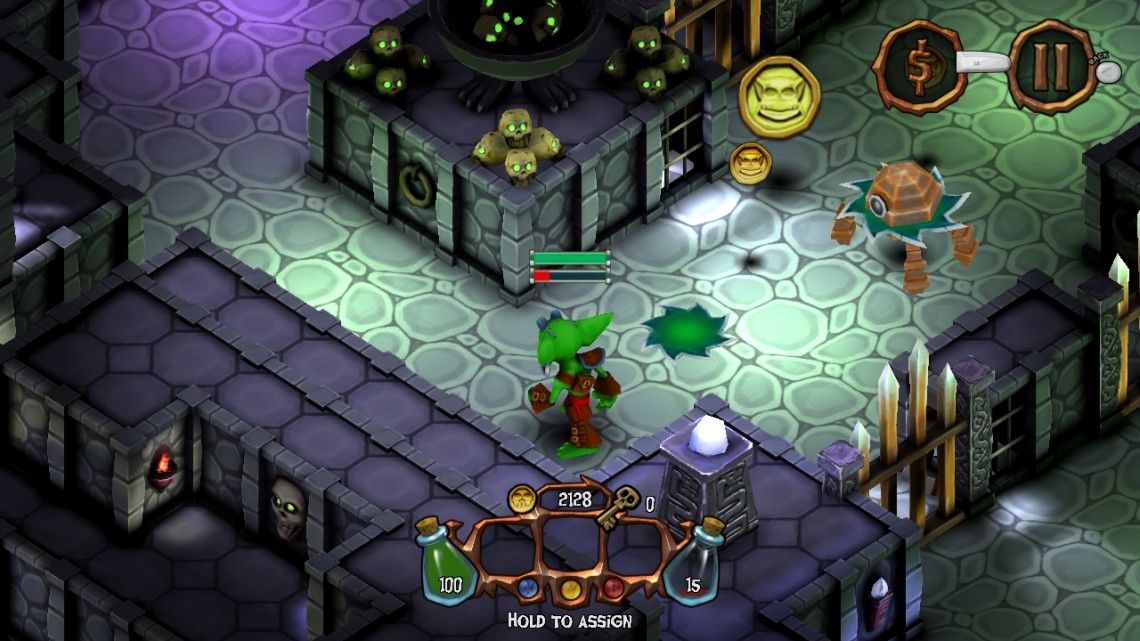The time has finally come to bring Goblin Quest: Escape! to Steam. If you want to see the Greenlight page immediately, you can find it here: http://botbiteindustries.com/greenlight.php
This post is the introduction to a series of upcoming blog posts about the background and technology of the game and generally interesting stuff we’ve been doing.
So let’s take a look at what the game has achieved so far.
Where we are
Let’s start with a screenshot of the final product (OUYA version) to see where we arrived.

First release screenshot
Here are some raw statistics:
- the core team of the game consists of two members
- the game includes the work of 6-10 people (depending on how you look at purchased assets, etc.)
- the game was released/ported on 6 platforms so far, excluding the upcoming Steam version
- the game uses the Unity3D engine and consists of ~176k lines of source code, mostly coming from external libraries. Our own code consists of:
- 9394 lines for utilities
- 4350 lines of gameplay code
- 6515 lines of GUI code
- 12811 lines of engine code
- 1880 lines for online systems
- the current svn revision is 2917
- the first svn revision to the current repo was commited on Nov 25, 2012, coming from a different repo after about a month of prototyping work
- the total size of uncompressed assets is 1.5 GB
- there are 614 localized strings in the entire game
Long story short
We started work on the game in late 2012. After working on and off, on schooldays and workdays, on holidays and weekends for a long time, the game was finished in mid-2014.

Original game concept
Our first release was OUYA, a microconsole that showed great promise. The game looked great on the large screen (even with the limitations of the free version of Unity and the modest power of the OUYA) and played great with a gamepad in hand.

Original game concept for mobile controls
After the OUYA release we were hoping we could make a success on the mobile market – afterall, Unity is cross-platform and can easily build for Android and iOS. We released the Google Play (and Amazon) versions in 2014 and the iOS version in 2015. While these releases were not tremendously successful, we got a lot of useful player feedback and information on gameplay.

We revised our game multiple times to have better art and fit technical requirements.
And now we’re at the final push – getting our game on Steam and putting it in front of the best kind of audience, with all the graphical and gameplay features that were originally intended and that are now enabled by running on computers and the awesome features of Unity 5.

Revised game concept – tiles
What’s next
Thanks for reading the article, hope you enjoyed it!
In the next post we will take a look at the game at different stages of development.
And again, if you wish to support us on Greenlight, the link is: http://botbiteindustries.com/greenlight.php
